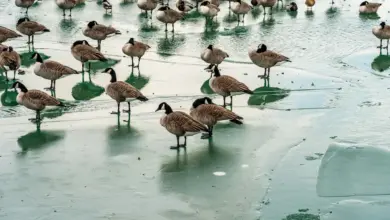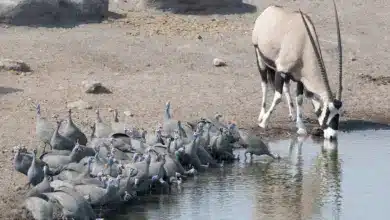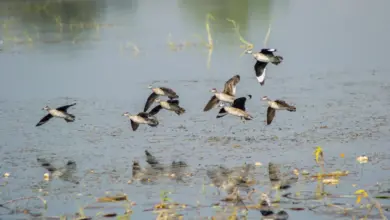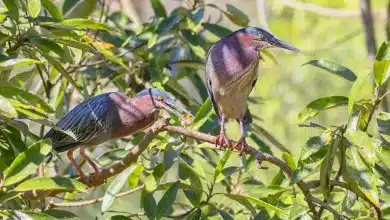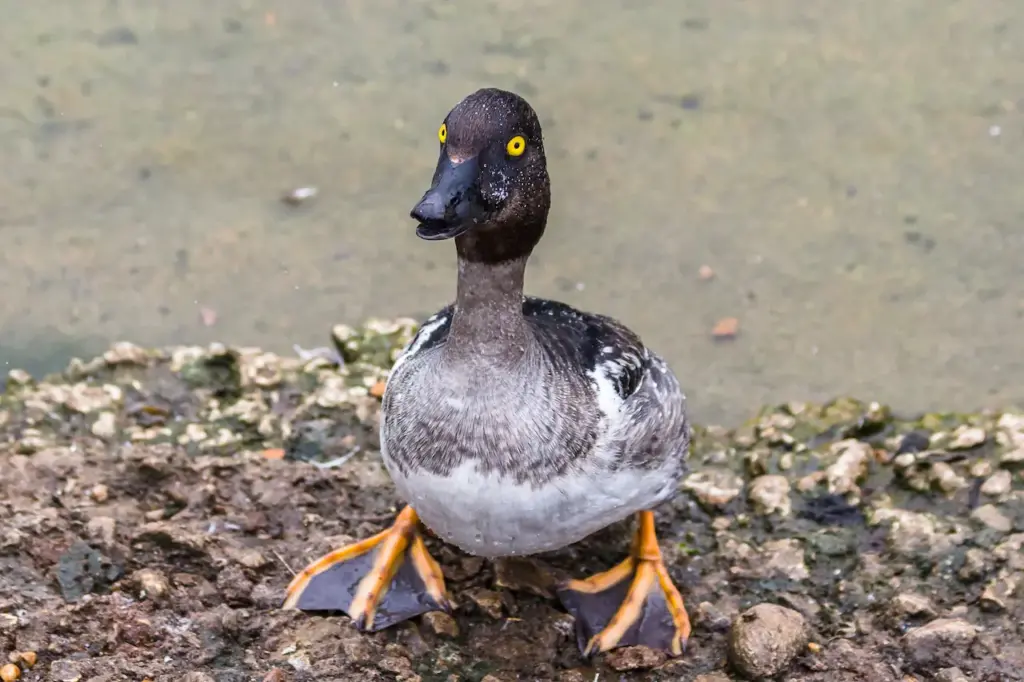
Distribution / Range
It breeds in Southeast Russia and northeast China, migrating in winter to southern China, Vietnam, and India. The name commemorates the Estonian naturalist Karl Ernst von Baer.
Description
It is similar in size and stance to its close relative the Ferruginous Duck (A. nyroca), although the coloration of the drakes (males) is entirely different.
Baer’s Pochards males are similar to those of the Greater Scaup (A. marila), but have a dark back and upper flanks; the white lower flanks and belly are conspicuous.
The females of Baer’s Pochards and the Ferruginous Duck are quite similar, but that holds for the females of almost all Aythya species.

Status
Formerly classified as a Vulnerable species by the IUCN, recent research shows that its numbers are decreasing more and more rapidly. It was consequently uplisted to Endangered status in 2008.
Copyright: Wikipedia. This article is licensed under the GNU Free Documentation License. It uses material from Wikipedia.org … Additional information and photos added by Avianweb.
Diet / Feeding:
Baer’s Pochard usually feeds by diving or dabbling – and often at night. They will upend for food as well as the more characteristic diving. Their staple diet consists of aquatic plants with some mollusks, aquatic insects, and small fish.
Ducks generally feed on larvae and pupae usually found under rocks, aquatic animals, plant material, seeds, small fish, snails, and crabs.
Feeding Ducks …
We all enjoy ducks and many of us offer them food to encourage them to come over and stay around – and it works! Who doesn’t like an easy meal?
However, the foods that we traditionally feed them at local ponds are utterly unsuitable for them and are likely to cause health problems down the road. Also, there may be local laws against feeding this species of bird – so it’s best to check on that rather than facing consequences at a later stage.
- Foods that can be fed to Ducks, Geese, and Swans to survive cold winters and remain healthy when food is scarce in their environment.
Please note that feeding ducks and geese makes them dependent on humans for food, which can result in starvation and possibly death when those feedings stop. If you decide to feed them, please limit the quantity to make sure that they maintain their natural ability to forage for food themselves – providing, of course, that natural food sources are available.
Please Note: The articles or images on this page are the sole property of the authors or photographers. Please contact them directly concerning any copyright or licensing questions. Thank you.

